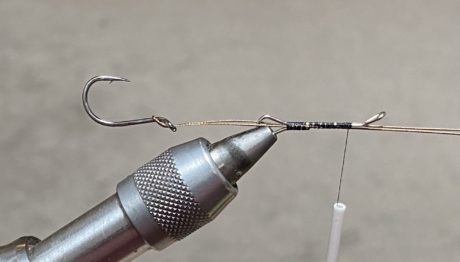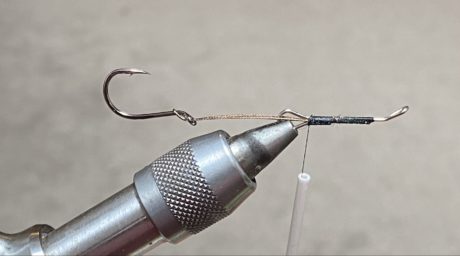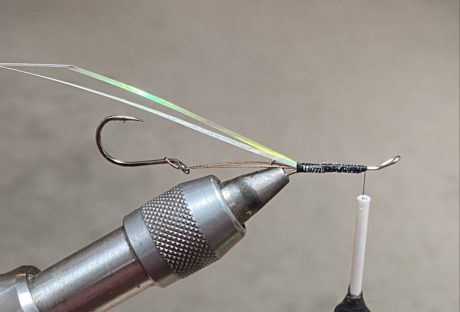
Recently I was asked to do a magazine article for Trout & Salmon magazine in the UK. I had to write it about a “sea trout” (sea-run brown trout) pattern and I could think of none better to ask than Sean Thomas in Wales. He gave me one of his nighttime patterns that he calls “Llewyrch” which in the Welsh language means radiance or gleam. He named the fly this because of the luminous quality of the body material used for this pattern.
As soon as I saw it I knew it would be a great salmon or steelhead pattern when a sparse pattern is necessary. I’ve done a few with a bright hot head. Also try different colours of flashabou to the wing, to match the fish you’re casting for.
Materials:
- Hook:- Size 6 or 4
- Shank:- 19 to 25mm shank
- Thread:- Black
- Loop:- Intruder wire
- Body:- Hendron Magnum flashabou glow strand wound as underbody then pearl strand wound over that. UV resin coating over to protect.
- Hackle:- Black pond heron
- Wing:- Black fox with stands of pearl mirror flash
- Over hackle:- Royal blue cock hackle
- Strands:- Natural amherst pheasant fibres tied round the shank
- Overwing:- Teal fibres
- Cheek:- Jungle cock eyes
- Head:- Black
Step 1: Attach the hook to the wire and tie it in.

Step 2: Double over the wire on the shank to lock it in.

Step 3: Tie in the Magnum flashabou strands.

Step 4: Wind the Glow strand over a layer of varnish to the head of the fly.

Step 5: Wrap the pearl strand over that and coat it with UV resin to protect the body.

Step 6: Tie in and wrap a black heron (or rhea fibres) around the shank as a hackle.

Step 7: Tie in a black fox wing.

Step 8: Tie in a strand on both sides of the mirror flash along the wing.

Step 9: Tie in and wrap a royal blue cock hackle around the shank.

Step 10: Tie in the amherst pheasant fibres around the shank.

Step 11: Tie in a teal feather as an overwing on the fly.

Step 12: Attach a side of jungle cock eyes as cheeks. Whip finish and varnish the head.
Other Flies By Stuart Foxall:
Leave a Reply